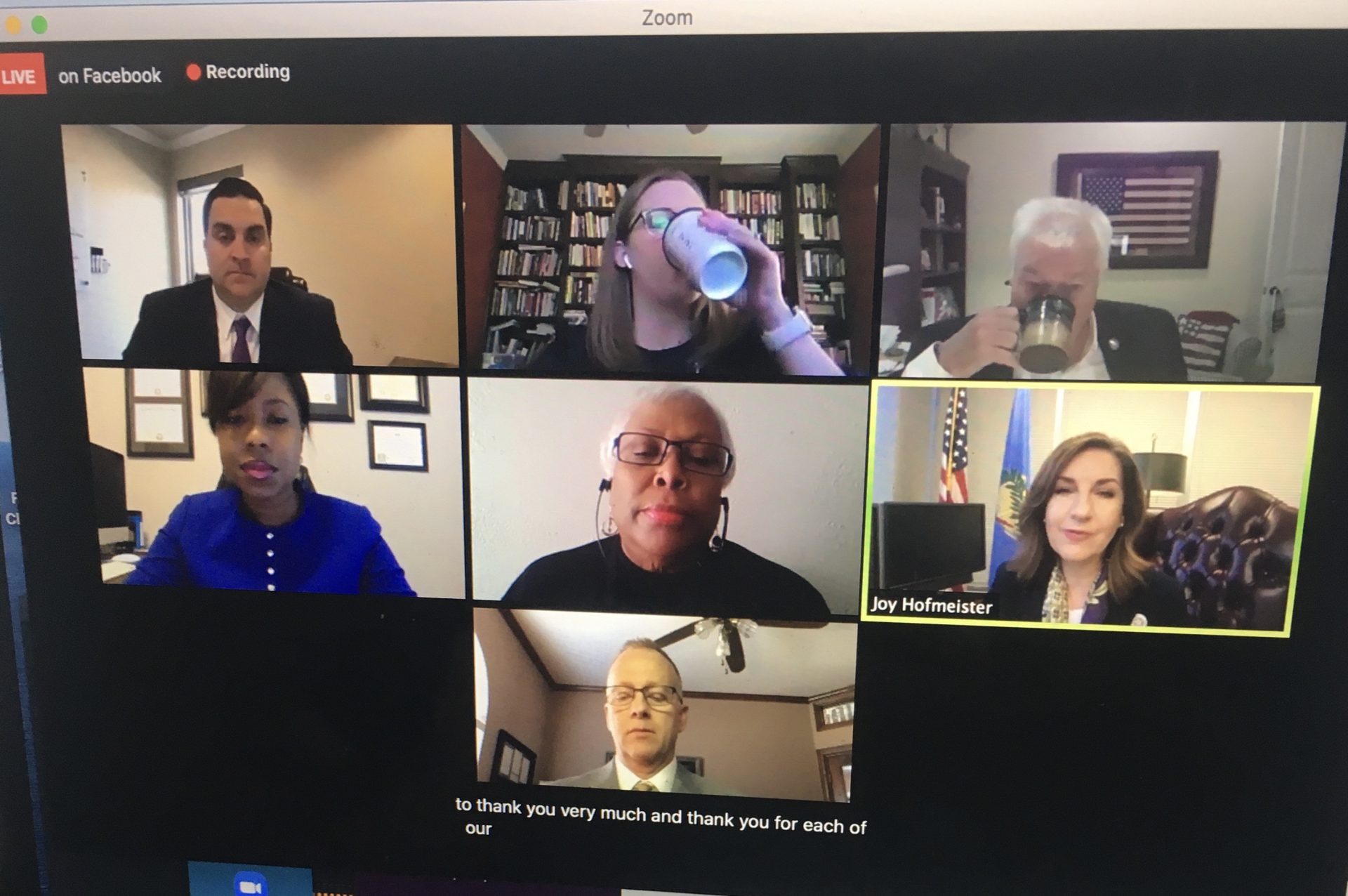
A Zoom meeting of Oklahoma's State Board of Education from earlier this year.
Robby Korth / StateImpact Oklahoma


A Zoom meeting of Oklahoma's State Board of Education from earlier this year.
Robby Korth / StateImpact Oklahoma
Though it’s unclear what school will look like, recent graduates and others will be able to teach in Oklahoma in fall 2020.
The state school board voted to unanimously allow a one-time, single year certification for people who were on track to get their certification.
Typical certification procedures were halted because teaching candidates couldn’t finish student teaching or take some final required tests.
The move will help with the state’s teacher shortage. Currently about 3,000 teachers are on an emergency certificate, which allows them to teach even though they haven’t met every requirement.
The move will allow at least 1,000 new teachers to educate Oklahoma students.
What they’ll be stepping into remains unclear, State Superintendent for Public Instruction Joy Hofmeister said.
In a news conference following Thursday’s meeting of the State Board of Education, Hofmeister told reporters districts will ultimately decide what education looks like for themselves. But the state will share input and put together a plan to help students prepare over the summer.
Once school wraps up in May, the state will look at programs over the summer to help students re-acquire skills before school starts again in the fall.
“There is a phase that we are entering into which is really going to focus on the recovery of learning loss for hundreds of thousands of Oklahoma school children,” she said.
Hofmeister also said she wants to use federal coronavirus stimulus funds earmarked for education to boost internet connectivity for Oklahoma students. “Our primary focus is on connectivity and our ability to close the digital divide,” she said.
The issue has been highlighted by the challenges districts face as they close out the school year conducting distance learning. Almost a quarter of the state’s students don’t have access to home internet.
The idea contradicts one championed by Governor Kevin Stitt to spend some of Oklahoma’s CARES Act money on equal opportunity scholarships to send children to private schools.
How and where money will be spent will vary by district. Oklahoma school districts will receive the bulk of $161 million dollars to spend where they have shortfalls, while a $40 million fund will be dispersed by the Governor via block grants at his discretion.
The Thursday meeting was also briefly interrupted by so-called Zoom bombers.
Users entered racist and sexist remarks into a public chat that halted the meeting for about five minutes.
After the pause, the department booted the offending members from the Zoom teleconference call and suspended comment in a chat box.
Though the Zoom platform has been a handy one for public meetings moved online because of coronavirus, it is a common target for security breaches. Cybersecurity experts as well as the FBI have advised Zoom users to take special measures to ensure privacy.
But that is a difficult task when trying to keep public meetings open to everyone, Hofmeister said.
Following the meeting, she said she was disappointed in the disruption, but it was just a difficult fact of life.
“This is, I think, not uncommon and something we seek to address in the future,” she said. “But we do what we must do in the midst of reality.”